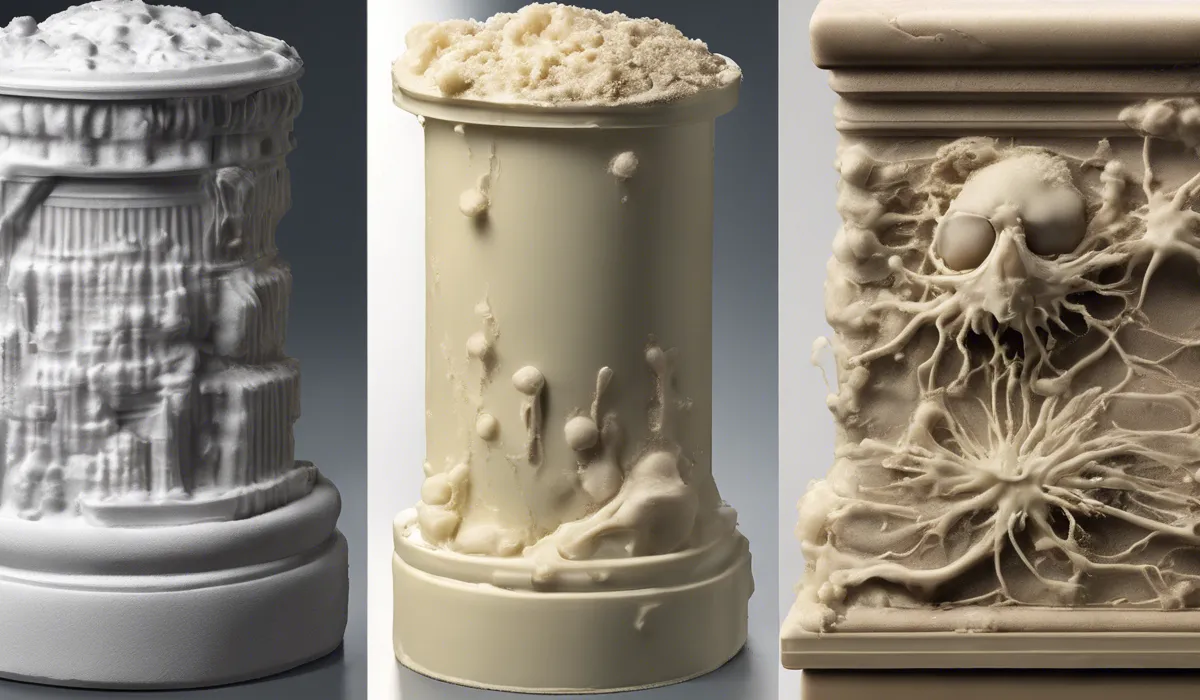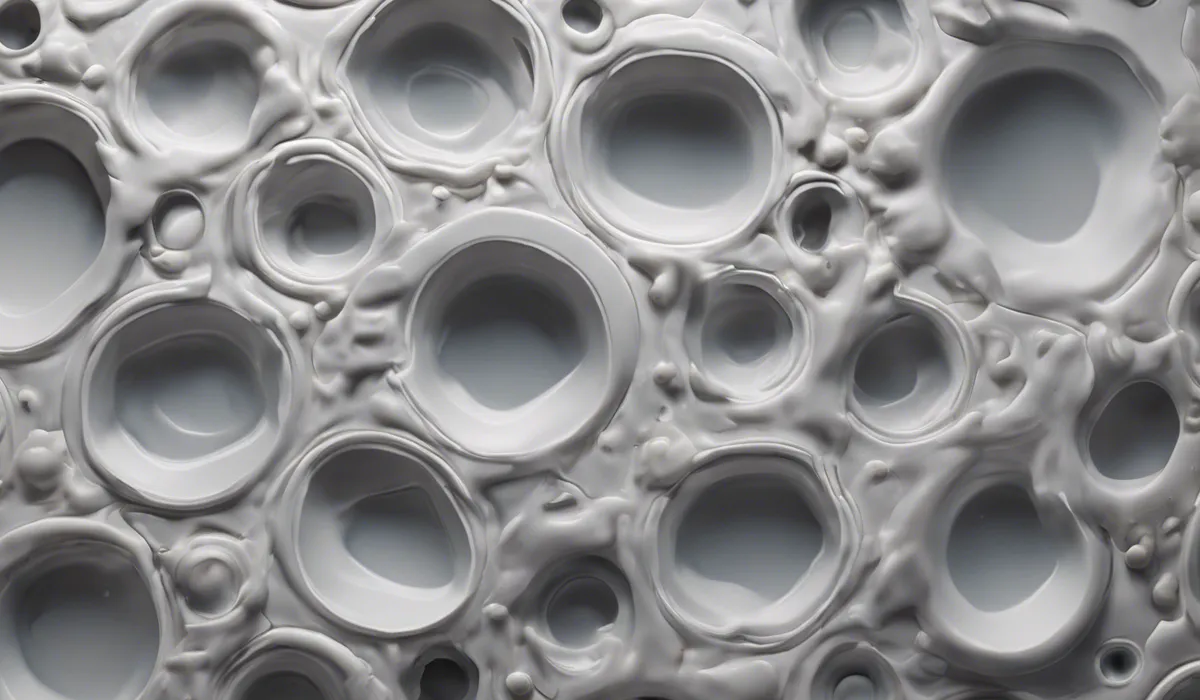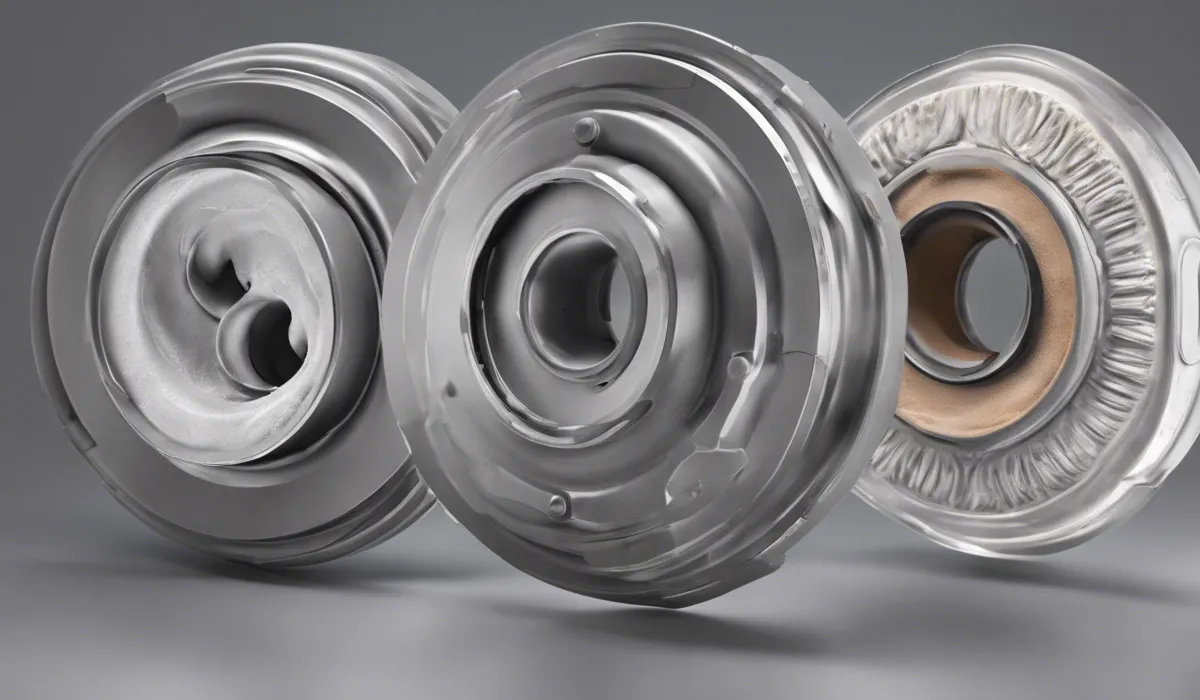Molds are formed by the growth of fungi in environments with moisture, organic material, and suitable temperatures. Spores land on a damp surface and germinate, developing into multicellular structures that can spread across surfaces.
The Science of Mold Growth

Understanding Mold as a Fungus
Mold is a living organism belonging to the kingdom Fungi. It is a relative of mushrooms and yeast.
Unlike plants that make their own food, molds survive by breaking down and eating the organic materials they live on. Mold colonies can appear fuzzy or slimy and come in various colors like black, green, white, or orange.
Necessary Conditions for Mold to Thrive
Mold needs just a few conditions to grow. These include moisture, warmth, a source of food, and oxygen.
Moisture can come from many places, like damp basements or wet towels. Molds love warm environments but can grow in the cold too. Any organic material, like wood or cotton, can be a food source, and oxygen is present in the air around us.
The Role of Mold Spores
Mold spores are tiny particles that act like seeds. They float through the air and land on surfaces.
If the conditions are right, they grow into new mold colonies. Spores are very light and can travel on clothes, through open windows, or with pets, making them hard to avoid.
Common Molds in Our World
There are thousands of mold types. Some common ones you might find at home include Aspergillus, often found on food and in air conditioning systems, and Cladosporium, which can grow on fabrics and wood.
Stachybotrys, also known as black mold, grows on wet building materials and is known for health concerns.
Factors Contributing to Mold Formation

The Impact of High Humidity
High humidity provides the perfect amount of moisture for mold to start growing. Places like bathrooms and kitchens can be especially prone to mold because of the steam from showers and boiling water. Using fans and opening windows helps reduce humidity and mold growth.
Effects of Poor Ventilation
Poor ventilation traps moist air inside. Without fresh air to move it along, this moist air creates an environment where mold can grow easily.
It is important to keep air moving. Use fans or open doors between rooms to help air flow through your home.
Mold’s Favorite Snacks: Organic Materials
Molds eat things like wood, paper, and fabrics. These materials are found in many places in a home, from the wooden structure to the cotton towels.
Keeping these materials dry and clean can help prevent mold from finding a place to grow.
Temperature Ranges for Mold Growth
Molds have a wide range of temperatures where they can grow. Some like it warm, while others can grow in cooler temperatures.
Most molds grow best at temperatures between 60 and 80 degrees Fahrenheit. Keeping your home at a steady temperature can help control mold growth.
Water Incidents and Mold
Leaks, floods, and condensation can all lead to mold growth. A small drip under a sink can create a mold problem over time.
Big floods can cause mold to grow quickly. It is important to fix water problems as soon as you find them to prevent mold.
Prevention and Control of Mold

Reducing Indoor Humidity
Using dehumidifiers helps take moisture out of the air. This makes it harder for mold to grow.
Improving ventilation by installing fans or opening windows also helps reduce humidity. A good rule is to keep indoor humidity below 60 percent.
Fixing Leaks and Water Damage
It is very important to fix any leaks as soon as possible. If you have water damage, clean it up and dry it out within 24 to 48 hours.
This can stop mold from starting to grow. Check places like under sinks and around windows regularly for signs of water.
Cleaning Tips to Keep Mold Away
Clean and dry surfaces regularly. Use mold-killing products in bathrooms and kitchens. Do not leave wet items like towels or clothes lying around. If you have a mold outbreak, clean it up quickly and safely.
When to Call Mold Professionals?
If you find a lot of mold or think it is making you sick, it is time to call a professional. They can test for mold and tell you the best way to get rid of it. If you had a big water leak or flood, it is also a good idea to get professional help to make sure all the mold is gone.
FAQs About Mold Formation
What conditions are necessary for mold to form?
Mold requires moisture, organic material, and suitable temperatures to grow.
How does mold begin to grow on surfaces?
Mold growth starts when spores land on a damp surface and germinate, evolving into multicellular structures.
Can mold form on any type of surface?
Mold can form on various surfaces as long as they provide moisture and organic material for sustenance.
What temperature range is most conducive to mold growth?
Molds typically thrive in warm environments, but some species can grow in cooler temperatures as well.
How quickly can mold spread across a surface?
Mold can spread rapidly across a surface, depending on the environmental conditions and the type of mold.
Final Thoughts
Molds take shape when fungal spores encounter moist, organic surfaces at appropriate temperatures.
These spores germinate and grow into multicellular structures capable of spreading over various materials, underlining the importance of controlling moisture to prevent mold formation.
